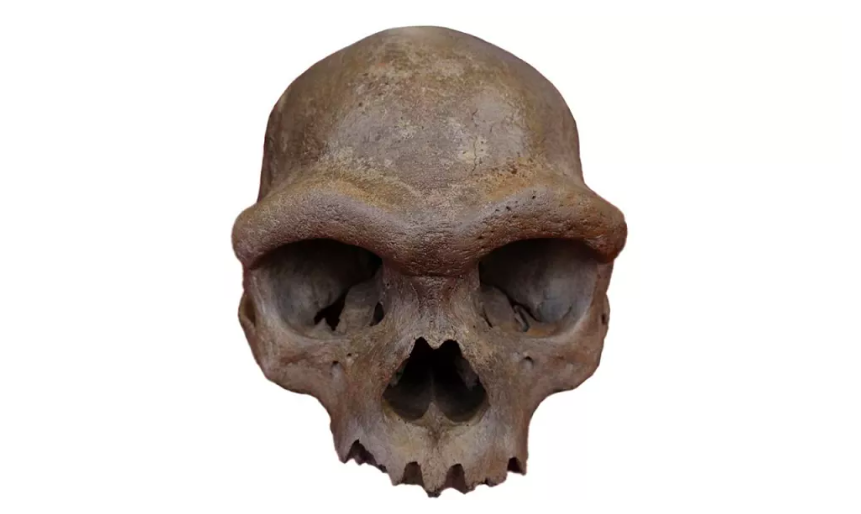Dragon Man Identified as Denisovan: Ancient DNA Reveals Lost Human Species in China
Quote from Alex Bobby on June 21, 2025, 8:53 AM
Ancient ‘Dragon Man’ DNA Reveals Link to Mysterious Human Relative: The Denisovans
Nearly a century after its discovery, a long-misunderstood human fossil nicknamed “Dragon Man” has finally revealed its ancient secrets. In a groundbreaking study, scientists have confirmed that the 146,000-year-old skull found in China belongs to the Denisovans — a long-lost species of archaic humans whose full physical form has remained largely a mystery until now.
This revelation ends decades of speculation about the skull's origins and sheds new light on the Denisovans’ appearance, geographic range, and potential connection to modern humans. The findings were published in the prestigious journals Cell and Science, marking a major leap forward in the study of human evolution.
A Skull Hidden for Decades
The story of Dragon Man begins in 1933, when a Chinese labourer unearthed a remarkably well-preserved human skull while working on a bridge project near Harbin, in China’s Heilongjiang province. Fearing repercussions, he hid the fossil at the bottom of a well, where it lay undisturbed for more than 80 years. It wasn’t until 2018 that his descendants recovered the skull and donated it to Chinese scientists for examination.
What researchers found astonished them: a large, intact cranium with thick brow ridges and a surprisingly modern-looking face. The fossil, dated to about 146,000 years ago, didn’t match any known prehistoric human species. In 2021, scientists gave it a provisional classification: Homo longi, or "Dragon Man," named after the Black Dragon River (Heilongjiang) region where it was discovered.
DNA Unlocks the Mystery
Now, using an innovative DNA-extraction technique, scientists have finally confirmed what Dragon Man truly is. By scraping dental plaque (calculus) from the fossil’s mouth, researchers were able to retrieve genetic material and ancient proteins — a challenging feat given the age of the specimen.
“The finding that the human DNA of the Harbin specimen is better preserved in the dental calculus than in the dense bones... suggests that dental calculus may be a more valuable source for investigating DNA in Middle Pleistocene hominins,” wrote Professor Qiaomei Fu, of the Institute of Palaeontology and Paleoanthropology in Beijing.
The analysis confirmed that Dragon Man is a Denisovan — a species first identified in 2010 from a few fossilised bone fragments found in Denisova Cave in Siberia. Until now, scientists had no clear idea what Denisovans looked like. The Harbin skull offers the first nearly complete view of a Denisovan’s physical traits.
A Glimpse into a Lost Human Cousin
The Harbin skull is striking in size and features. It has a broad face, thick brow ridges, a large brain-case, and an unusually wide nasal cavity. Its structure bears some similarities to both Neanderthals and modern humans, but with enough differences to mark it as a distinct lineage.
This helps fill a major gap in our understanding of human evolution in Asia, where Denisovans were likely widespread but left behind few identifiable remains. The genetic legacy of the Denisovans lives on, particularly among populations in Southeast Asia, Australia, and Melanesia, where modern humans retain up to 5% Denisovan DNA.
The new findings also reinforce the idea that ancient human species interbred frequently — creating a complex, intertwined web of ancestry that continues to shape the genetic makeup of humans today.
Why the Discovery Matters
This discovery is significant for several reasons. First, it offers concrete anatomical evidence of what Denisovans may have looked like — a mystery that has eluded scientists for over a decade. Second, it shows how far ancient DNA science has come. Using techniques that were not available just a few years ago, researchers can now extract genetic material from sources like dental plaque, which was once overlooked.
Most importantly, the research opens the door to reclassifying other ancient fossils. With a better understanding of Denisovan morphology, scientists may now be able to identify other Denisovan remains that were previously misclassified or dismissed as outliers.
A New Chapter in Human Evolution
The identification of Dragon Man as a Denisovan is more than just a scientific milestone — it’s a reminder of how much of our history remains buried, waiting to be unearthed and understood. As tools and techniques for genetic analysis improve, the human family tree continues to evolve, becoming richer and more nuanced.
Dragon Man’s rediscovery and identification provide a vivid link to our distant past — a time when multiple human species walked the Earth, often side by side. Now, with a clearer picture of Denisovans and their potential role in our ancestry, scientists are poised to rewrite one of the most fascinating chapters in the story of human evolution.
Conclusion
The identification of “Dragon Man” as a Denisovan marks a major breakthrough in our understanding of human evolution. After nearly a century of mystery, the Harbin skull has finally found its place in the human family tree — providing scientists with the first real glimpse of what Denisovans may have looked like and how they lived.
Thanks to innovative DNA recovery methods and international collaboration, this discovery not only solves a decades-old puzzle but also sets a new standard for paleoanthropological research. As scientists continue to uncover more Denisovan fossils and decode their genetic secrets, we move closer to understanding the rich, complex story of our shared ancestry — one that stretches across continents, species, and millennia.
Meta Description:
Scientists confirm that the mysterious Dragon Man skull found in China belongs to the Denisovans, offering new insights into this extinct human species through groundbreaking DNA analysis.

Ancient ‘Dragon Man’ DNA Reveals Link to Mysterious Human Relative: The Denisovans
Nearly a century after its discovery, a long-misunderstood human fossil nicknamed “Dragon Man” has finally revealed its ancient secrets. In a groundbreaking study, scientists have confirmed that the 146,000-year-old skull found in China belongs to the Denisovans — a long-lost species of archaic humans whose full physical form has remained largely a mystery until now.
This revelation ends decades of speculation about the skull's origins and sheds new light on the Denisovans’ appearance, geographic range, and potential connection to modern humans. The findings were published in the prestigious journals Cell and Science, marking a major leap forward in the study of human evolution.
Register for Tekedia Mini-MBA edition 19 (Feb 9 – May 2, 2026): big discounts for early bird.
Tekedia AI in Business Masterclass opens registrations.
Join Tekedia Capital Syndicate and co-invest in great global startups.
Register for Tekedia AI Lab: From Technical Design to Deployment (next edition begins Jan 24 2026).
A Skull Hidden for Decades
The story of Dragon Man begins in 1933, when a Chinese labourer unearthed a remarkably well-preserved human skull while working on a bridge project near Harbin, in China’s Heilongjiang province. Fearing repercussions, he hid the fossil at the bottom of a well, where it lay undisturbed for more than 80 years. It wasn’t until 2018 that his descendants recovered the skull and donated it to Chinese scientists for examination.
What researchers found astonished them: a large, intact cranium with thick brow ridges and a surprisingly modern-looking face. The fossil, dated to about 146,000 years ago, didn’t match any known prehistoric human species. In 2021, scientists gave it a provisional classification: Homo longi, or "Dragon Man," named after the Black Dragon River (Heilongjiang) region where it was discovered.
DNA Unlocks the Mystery
Now, using an innovative DNA-extraction technique, scientists have finally confirmed what Dragon Man truly is. By scraping dental plaque (calculus) from the fossil’s mouth, researchers were able to retrieve genetic material and ancient proteins — a challenging feat given the age of the specimen.
“The finding that the human DNA of the Harbin specimen is better preserved in the dental calculus than in the dense bones... suggests that dental calculus may be a more valuable source for investigating DNA in Middle Pleistocene hominins,” wrote Professor Qiaomei Fu, of the Institute of Palaeontology and Paleoanthropology in Beijing.
The analysis confirmed that Dragon Man is a Denisovan — a species first identified in 2010 from a few fossilised bone fragments found in Denisova Cave in Siberia. Until now, scientists had no clear idea what Denisovans looked like. The Harbin skull offers the first nearly complete view of a Denisovan’s physical traits.
A Glimpse into a Lost Human Cousin
The Harbin skull is striking in size and features. It has a broad face, thick brow ridges, a large brain-case, and an unusually wide nasal cavity. Its structure bears some similarities to both Neanderthals and modern humans, but with enough differences to mark it as a distinct lineage.
This helps fill a major gap in our understanding of human evolution in Asia, where Denisovans were likely widespread but left behind few identifiable remains. The genetic legacy of the Denisovans lives on, particularly among populations in Southeast Asia, Australia, and Melanesia, where modern humans retain up to 5% Denisovan DNA.
The new findings also reinforce the idea that ancient human species interbred frequently — creating a complex, intertwined web of ancestry that continues to shape the genetic makeup of humans today.
Why the Discovery Matters
This discovery is significant for several reasons. First, it offers concrete anatomical evidence of what Denisovans may have looked like — a mystery that has eluded scientists for over a decade. Second, it shows how far ancient DNA science has come. Using techniques that were not available just a few years ago, researchers can now extract genetic material from sources like dental plaque, which was once overlooked.
Most importantly, the research opens the door to reclassifying other ancient fossils. With a better understanding of Denisovan morphology, scientists may now be able to identify other Denisovan remains that were previously misclassified or dismissed as outliers.
A New Chapter in Human Evolution
The identification of Dragon Man as a Denisovan is more than just a scientific milestone — it’s a reminder of how much of our history remains buried, waiting to be unearthed and understood. As tools and techniques for genetic analysis improve, the human family tree continues to evolve, becoming richer and more nuanced.
Dragon Man’s rediscovery and identification provide a vivid link to our distant past — a time when multiple human species walked the Earth, often side by side. Now, with a clearer picture of Denisovans and their potential role in our ancestry, scientists are poised to rewrite one of the most fascinating chapters in the story of human evolution.
Conclusion
The identification of “Dragon Man” as a Denisovan marks a major breakthrough in our understanding of human evolution. After nearly a century of mystery, the Harbin skull has finally found its place in the human family tree — providing scientists with the first real glimpse of what Denisovans may have looked like and how they lived.
Thanks to innovative DNA recovery methods and international collaboration, this discovery not only solves a decades-old puzzle but also sets a new standard for paleoanthropological research. As scientists continue to uncover more Denisovan fossils and decode their genetic secrets, we move closer to understanding the rich, complex story of our shared ancestry — one that stretches across continents, species, and millennia.
Meta Description:
Scientists confirm that the mysterious Dragon Man skull found in China belongs to the Denisovans, offering new insights into this extinct human species through groundbreaking DNA analysis.
Share this:
- Click to share on Facebook (Opens in new window) Facebook
- Click to share on X (Opens in new window) X
- Click to share on WhatsApp (Opens in new window) WhatsApp
- Click to share on LinkedIn (Opens in new window) LinkedIn
- Click to email a link to a friend (Opens in new window) Email
- Click to print (Opens in new window) Print



